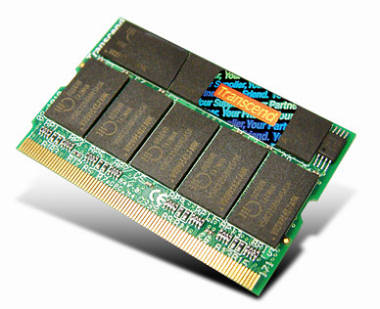 |
||
|
||
| ||
Sony Ericsson introduces financial report for Q3 2003: profitable after two years of losses Micron Technology samples SO-DIMM DDR2 Transcend releases 512Mb Micro-DIMM DDR266 modules ASUS and MSI to produce graphics cards on XGI Volari? Sony Ericsson introduces financial report for Q3 2003: profitable after two years of losses Sony Ericsson (Sony Ericsson Mobile Communications AB), the joint venture of Sony and Ericsson dedicated to mobile phones, announced financial report for Q3 2003 that finished on September 30. This quarter brought Sony Ericsson the first profits after two years of losses. In the 3rd fiscal quarter Sony Ericsson shipped 7.1 million handsets that exceeds the values of 3rd quarter of 2002 by 42%. Sales volume made 1.305 billion euros that is 50% more that year ago. At that in the primary fields – in GSM areas and in Japan — sales volumes increased by 73% and 130%, respectively. The company relates the success to increased demand for comprehensively featured mobile phones like T610. The net profit for this quarter made 62 million euros (compariing to 88 million losses of the previous quarter). Sony Ericsson plans to remain profitable, according to the results for H2 2003. The main strategy changes will be focused on increasing sales of inexpensive phones. Currently the average price for a Sony Ericsson handset is about 184 euros that is one of highest in the whole industry.
Micron Technology samples SO-DIMM DDR2 Another sign of oncoming changes in computer industry: Micron Technology sampled the first DDR2 SDRAM SO-DIMM modules to Intel. Modules´ form-factor naturally positions them for notebooks, and DDR2 clearly indicates they are designed for the second Centrino generation — Sonoma – that will be announced in H2 2004. Sonoma will include the future Dothan-based Pentium M, Calexico 2 802.11a/b/g wireless solution as well as the new chipset codenamed Alviso. The latter will differ by own integrated graphics PCI Express, NewCard, Serial ATA, Intel Azalia codec as well as the DDR2 support. New Micron DDR2 SO-DIMM modules 30mm in height have 128Mb or 256Mb capacities and are organized as x16 or x8. In the future the company plans to release the entire PC2-3200 and PC2-4300 series with 128Mb to 1Gb capacities.
Transcend releases 512Mb Micro-DIMM DDR266 modules Today Transcend Information released new 512Mb DDR266 SDRAM Micro-DIMM modules for notebooks.
 New 512Mb modules (TS64MMD64V6F) provide up to 1Gb total memory (if you have 2 x Micro-DIMM sockets, of course :). 172-pin 512Mb Micro-DIMM novelties are based on the 8-layer PCB. Sized 30x45x0.8mm, modules are organized as 16x32Mx8 DDR266.
ASUS and MSI to produce graphics cards on XGI Volari? We´ve already mentioned that graphics cards on XGI Technology´s Volari GPUs will be produced by at least 3 companies: CP Technology, Gigabyte and Club-3D. This is already significant considering these GPUs are little known and the maker was established just four months ago (I guess there´s no sense in looking for succession between Volari and SiS developments, as these GPUs – at least family´s top-end – are bound to be developed from nothing). This makes the yesterday´s report by Taiwanese The Digitimes even more interesting. They stated that cards on XGI Volari GPUs might also be produced by Asustek and MSI. The release dates of the first solutions remained the same – late November/early December. This makes this message from The Digitimes (that mistakes very rarely, by the way) even more important and directly points to the fact that Volari are not a BitBoys-like marketing idea, but a serious business initiative. Still there´s no exact release dates for Volari-based solutions from ASUS and MSI. XGI confirms the partnership with CP Technology and Gigabyte, however refrains from commenting relations with Asustek and MSI. They say the first Volari volume quantities will be shipped in October – early November. Just to remind: XGI Volari desktop and mobile GPU family includes:
The new GPUs are compatible with DirectX9 and OpenGL 1.4 APIs; the top-end also support DDR DRAM and DDR2 DRAM. Volari V8 GPU clock speed is 350MHz, DDR-II clock is 500MHz (1GHz DDR). Volari family will be made using 0.13µm process. Ready cards will be priced similar to solutions from NVIDIA and ATI – from $99 to $499. Source: The DigiTimes
Write a comment below. No registration needed!
|
Platform · Video · Multimedia · Mobile · Other || About us & Privacy policy · Twitter · Facebook Copyright © Byrds Research & Publishing, Ltd., 1997–2011. All rights reserved. |